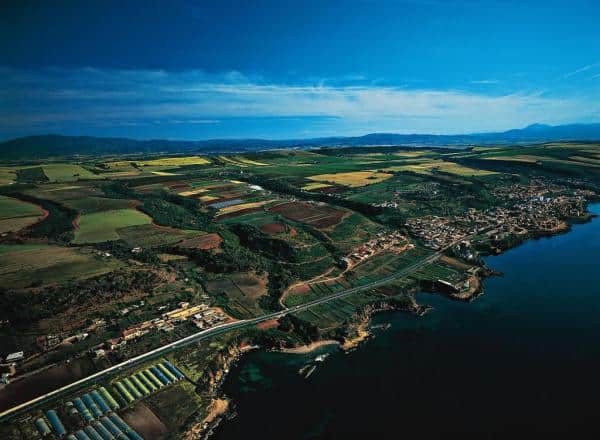The story of Algeria and their wine trade is one for others to learn from. It is no longer a wine hub, but its history has shown that the area is capable of producing a respectable vintage.
Back in the middle of the 20th century, Algeria was the single largest wine exporter in the world. Yes, the world. Not France, not Italy, but Algeria. Prior to Algeria’s war for independence, Algerian wine accounted for more than half of the total international wine trade[1].
Like much of the Mediterranean coasts, wine in the area is traceable to the Phoenicians. The Phoenician traders arrived in the area around 900 BC. Their first settlement in the area was the city of Carthage, located on the coast neaar the modern-day city of Tunis, in Tunisia. Wine-making was present in the area after the Romans conquered Carthage in 146 BC. However, most of that wine dried up during Muslim rule of the area in the 7th and 8th centuries, due to strict anti-alcohol stance by the Islamic religion[2].
In 1516, Algiers, as it was known at the time, was captured by the Ottomans and turned into a base for piracy. After intermittent periods of war and peace, the newly formed United States of America got involved in the First and Second Barbary Wars alongside the British and French at the turn of the 18th century. Shortly thereafter, in June of 1830, Algiers was invaded by the French and became the first French holding in Africa[3]. When the French invaded, they brought with them two things: a new name for the region, Algeria, and wine grapes. The timing worked well for these new vineyards because when a large phylloxera epidemic decimated the crops across France in the middle of the 19th century, Algerian wines came to the rescue. By this time, some winemakers from the Baden, Germany had started to bring modern wine-making techniques and increased the overall quality of Algerian wines[1].
By the middle of the 20th century, the wines of the North African coast accounted for nearly two thirds of the wine that was internationally traded. The dominant grape variety in Algeria at this time was Carignan, which is believed to have originated in Aragon. Carignan was primarily used as a blending wine to enhance color and alcohol content. This was considered to be the high point in the Algerian production and distribution of wine.
“Despite the protective market measures and the temporary devastation of the Second World War, … Algeria still ranked as the world’s fourth-largest producer in 1961.”[4]
After Algeria gained independence in 1962, many of the French left and with them, so did their propensity for drinking wine. The local demand for wine in Algeria dwindled. France also reduced the amount of exported wine that it would accept, which restricted the number of sellers that the Algerian wine-makers had access to. The Soviet Union had an agreement to buy 130 million US gallons of wine each year from the Algerians from 1969 until 1975, but even that wasn’t enough to prevent the local vineyards from failing. Algerian wine production in 1962 accounted for roughly 400 million US gallons (15 million hectolitres). By 2009, this production level had dramatically fallen to about 16 million US gallons (600,000 hectolitres). This is roughly the same wine volume Algeria produced in 1882, over a hundred and twenty years earlier[4].

You can find the history of other locations too, just by clicking here.
Sources
1) ALGERIAN WINE
https://en.wikipedia.org/wiki/Algerian_wine
2) History of Algeria
https://en.wikipedia.org/wiki/History_of_Algeria
3) French Algeria
https://en.wikipedia.org/wiki/French_Algeria
4) The rise and fall of a wine juggernaut (or why your wine doesn’t come from Algeria any more)
https://www.theglobeandmail.com/life/food-and-wine/wine/the-rise-and-fall-of-a-wine-juggernaut-or-why-your-wine-doesnt-come-from-algeria-any-more/article9076845/






